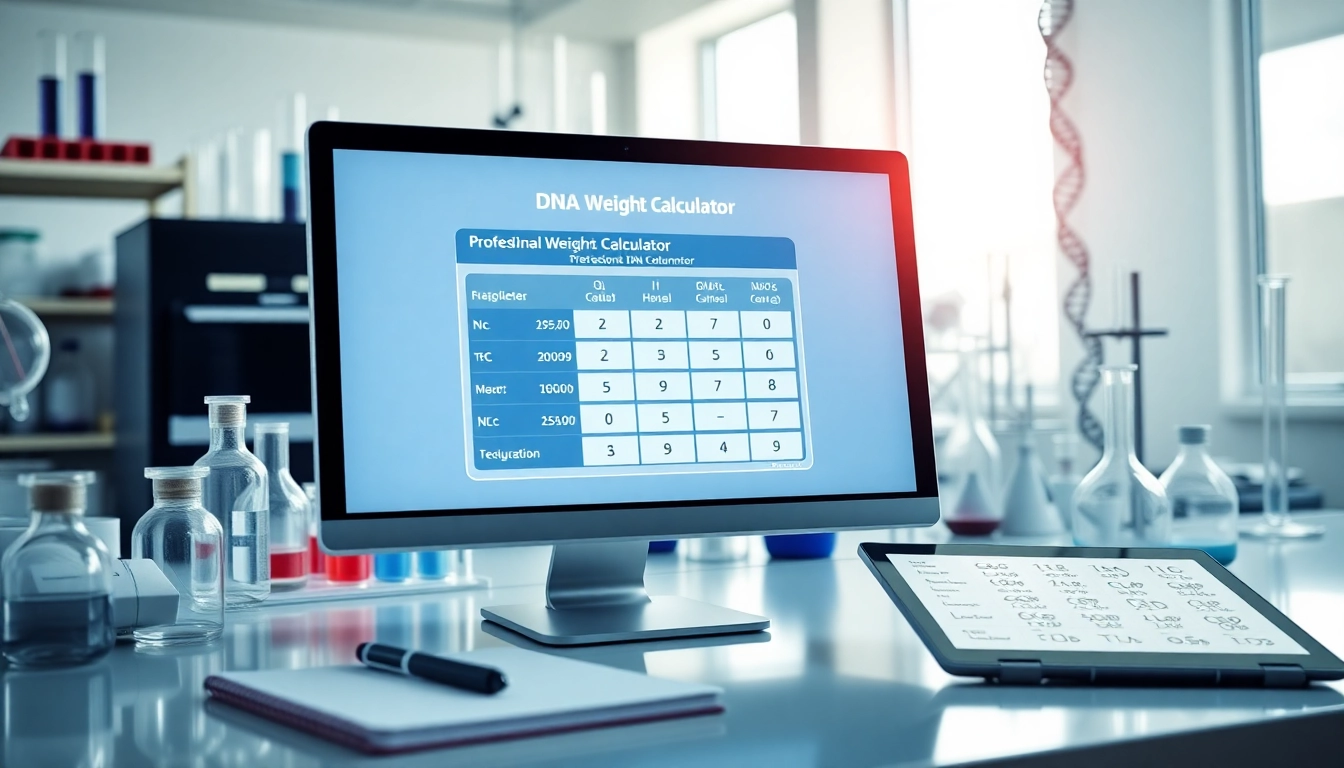Understanding Molarity and Its Importance
What is Molarity?
Molarity is a fundamental concept in chemistry that refers to the concentration of a solute in a solution. Specifically, it is defined as the number of moles of solute per liter of solution (mol/L). This measurement provides a clear way to quantify the amount of a substance in a given volume of liquid, allowing chemists and researchers to communicate their findings accurately and perform calculations necessary for various experiments. Molarity is crucial in laboratory settings, particularly when preparing solutions, conducting reactions, or developing pharmaceuticals. Understanding molarity enables chemists to replicate experiments, adjust concentrations, and predict outcomes reliably.
Why Use a Molarity Calculator?
The use of a Molarity Calculator simplifies the process of determining the concentration of solutions. It allows users to easily calculate key variables, such as molarity, volume, and mass, without complex math or manual calculations. Educators, researchers, and students benefit significantly from these tools, as they provide accurate results in mere seconds and help in minimizing human error. Whether you are deriving a series of dilutions or preparing standard solutions for qualitative and quantitative analysis, a molarity calculator is essential for accuracy and efficiency.
Applications of Molarity in Science
Molarity finds extensive applications across various scientific disciplines:
- Chemistry: Molarity is often used to prepare solutions for titrations, a core concept in analytical chemistry.
- Biology: In biochemistry, understanding molarity is crucial for enzyme kinetics and reaction rate studies.
- Pharmacy: Drug formulation heavily relies on molarity to ensure proper dosages.
- Environmental Science: Molarity aids in understanding pollutant concentrations in water and air samples.
How the Molarity Calculator Works
Key Variables in Molarity Calculation
When using a molarity calculator, there are several key variables that one must understand:
- Moles of Solute: This is the amount of the substance being dissolved, typically provided in grams divided by the molar mass.
- Volume of Solution: The total volume of the solution in liters, which can often be expressed as milliliters (L = mL/1000).
- Molar Concentration (Molarity): This is what the calculator yields, denoting the concentration of the solution.
The Molarity Formula Explained
The fundamental formula for calculating molarity (M) is:
M = n / V,
where n represents the number of moles of solute and V is the volume of the solution in liters. Rearranging this equation can help derive any of the parameters if the others are known. For example, if you need to find out the required volume of solution to achieve a specific molarity, the equation is rearranged as:
V = n / M.
Common Use Cases for the Calculator
A molarity calculator is widely used in various scenarios:
- Determining the required mass of solute to achieve a desired molarity.
- Finding out how much diluent to add to a concentrated solution to reach a target concentration.
- Converting between different concentration units, such as moles per liter to grams per milliliter.
Step-by-Step Guide to Using the Molarity Calculator
Inputting Data Accurately
The first step in using a molarity calculator involves inputting accurate data. Users need to provide:
- The mass of the solute in grams.
- The molecular weight of the solute, typically expressed in grams per mole (g/mol).
- The volume of the solution in liters or milliliters.
Ensuring that these values are accurate and in the correct units is essential for obtaining reliable results.
Understanding Output Results
Once the necessary information has been entered, the calculator will return results, which might include:
- The molarity of the solution, indicating how concentrated the solution is.
- Additional information, such as the number of moles or required mass of solute depending on the inputs.
Understanding these outputs can help users adjust their experimental conditions accordingly.
Troubleshooting Common Issues
Users may encounter a few common issues while using molarity calculators:
- Incorrect Units: Always ensure that inputs are in the correct measurements, especially when dealing with volume and mass.
- Rounding Errors: When inputting information, small rounding can lead to larger discrepancies in results; be precise!
- Understanding Output: Take time to interpret the results provided by the calculator accurately; refer to guides when necessary.
Advanced Concepts Related to Molarity
Calculating Dilutions
Dilutions are a common application of molarity, especially in biological and chemical settings. The dilution formula can be expressed as:
C1V1 = C2V2
Here, C1 and V1 refer to the concentration and volume of the stock solution, while C2 and V2 represent the desired concentration and final volume. Understanding this relationship is crucial for preparing diluted solutions accurately.
Converting Molarity to Other Concentration Units
In practice, you may need to convert between different concentration units. For example, molarity can be converted to milligrams per liter (mg/L) using the molecular weight of the solute. The conversion is performed using the following relationship:
Concentration (mg/L) = Molarity (mol/L) × Molecular Weight (g/mol) × 1000.
This helps in research requirements that specify concentrations in different units.
Implications of Molecular Weight in Calculations
The molecular weight of a substance plays a critical role in molarity calculations. Despite being a fixed value for a given compound, inaccuracies in determining this parameter can lead to significant errors in experimental procedures.
Always verify the molecular weight from reliable sources and remember that the purity of the solute can also affect your calculations. If the solute isn’t pure, be sure to adjust the mass accordingly to reflect the actual amount of solute present.
Best Practices for Accurate Molarity Calculations
Choosing the Right Chemical Measurements
Choosing accurate measurements in laboratory settings is crucial. Use precise balances for weighing solutes and calibrated glassware for measuring liquid volumes. Regular calibration and maintenance of equipment ensure consistent and reliable results.
Avoiding Common Mistakes
Here are several common mistakes to watch out for:
- Not accounting for temperature changes, which can affect solution volume.
- Failing to mix solutions thoroughly before taking measurements.
- Misreading measurement markings on laboratory equipment.
Real-World Examples of Molarity Calculation
To illustrate the practical application of molarity calculations, consider this example:
If a researcher requires a 2 M solution of sodium chloride (NaCl) for an experiment and needs 500 mL of the solution:
- The molar mass of NaCl is approximately 58.44 g/mol.
- The number of moles needed is calculated as:
- The mass of NaCl required can then be calculated: 1 mol × 58.44 g/mol = 58.44 g.
n = M × V = 2 mol/L × 0.5 L = 1 mol.
This example demonstrates the application of the molarity formula and the importance of meticulous calculation in scientific experiments.



